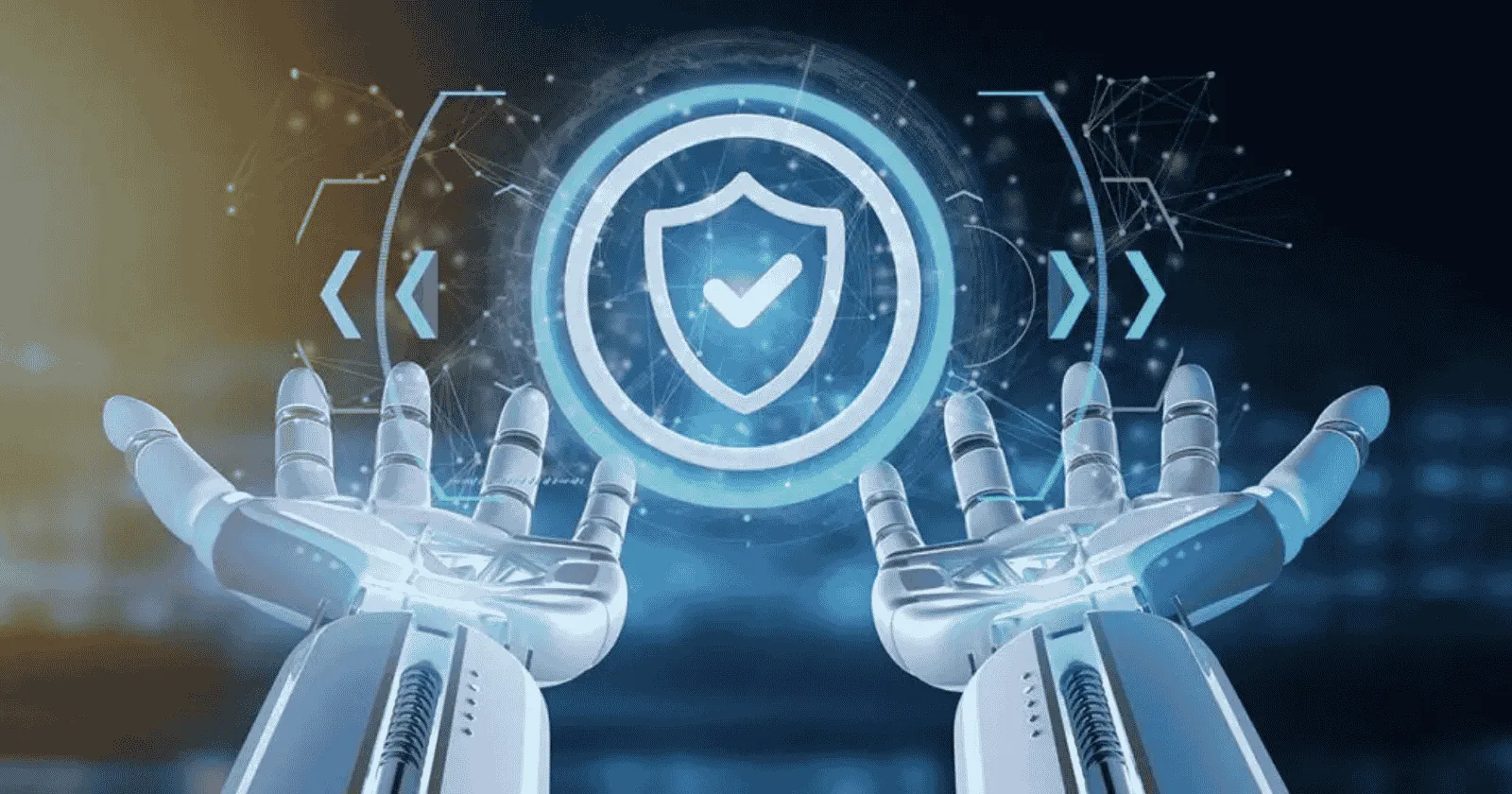Essential AI Safety Tools Developers Should Know: Red-Teaming Guide 2025
According to Microsoft’s 2025 report on red-teaming generative AI products, they identified critical vulnerabilities in all 100 AI systems tested, with 78% of models allowing some form of unsafe output when subjected to sophisticated prompting techniques. Meanwhile, regulatory pressure is intensifying, with the EU AI Act now mandating formal red-teaming for high-risk AI systems and similar requirements emerging in US legislation.
TL;DR: As AI systems become more powerful and widely deployed, red-teaming has evolved from a nice-to-have to a regulatory requirement. This article provides a comprehensive guide to the most essential AI safety tools available in 2025, with a focus on open-source solutions like PyRIT, Garak, and LLMFuzzer. These tools enable developers to proactively identify vulnerabilities related to prompt injection, jailbreaking, bias, hallucination, and other potential harms before deployment. Through systematic testing and continuous monitoring, these tools help ensure AI systems operate safely and comply with increasingly stringent regulations worldwide.
Read also : Canva Magic Studio vs Traditional Designers
Table of Contents
- What Is AI Red-Teaming?
- Why Red-Teaming Matters in 2025
- Regulatory Requirements
- Increased Attack Sophistication
- Building Trust and Transparency
- Top 10 AI Red-Teaming Tools for Developers
- 1. PyRIT (Python Risk Identification Toolkit)
- 2. Garak
- 3. LLMFuzzer
- 4. AI Guardian
- 5. Plexiglass
- 6. HouYi
- 7. LLM Guard
- 8. Vigil-LLM
- 9. PromptMap
- 10. CyberSecEval
- Best Practices for Implementing AI Red-Teaming
- 1. Define Clear Threat Scenarios
- 2. Combine Automated and Manual Testing
- 3. Implement Continuous Testing
- 4. Establish Clear Documentation and Reporting
- 5. Align with Regulatory Requirements
- Comparing Red-Teaming Tools
- Real-World Red-Teaming Case Studies
- Microsoft’s 100 Product Challenge
- Anthropic’s Frontier Safety Approach
- Open-Source Model Security
- The Future of AI Red-Teaming
- Regulatory Evolution
- Multi-Agent Red-Teaming
- Collaborative Industry Efforts
- Key Takeaways
- FAQ
- What is the difference between AI red-teaming and traditional penetration testing?
- Do I need specialized expertise to implement AI red-teaming?
- How often should we conduct AI red-teaming?
- Are these tools compliant with regulatory requirements like the EU AI Act?
- How do we balance transparency about vulnerabilities with security concerns?
What Is AI Red-Teaming?
AI red-teaming is a proactive security practice that involves simulating attacks on AI systems to uncover vulnerabilities before they can be exploited in real-world settings. Just as traditional cybersecurity red teams attempt to breach an organization’s defenses, AI red-teaming involves deliberately trying to make AI systems fail or produce harmful outputs.
The practice has evolved from its military roots to become a standard security procedure in the AI industry. Red-teaming is especially important for generative AI systems, which can produce unexpected outputs based on user inputs and may harbor unknown vulnerabilities.
Featured Snippet Target (40 words): AI red-teaming is a security practice where experts deliberately test AI systems for vulnerabilities by attempting to make them produce harmful outputs. This process helps developers identify and fix safety issues before deployment, ensuring systems operate securely in real-world settings.
Why Red-Teaming Matters in 2025
Regulatory Requirements
The regulatory landscape for AI has evolved significantly in recent years. The EU AI Act, which came into full effect in 2025, specifically requires red-teaming for high-risk AI systems. Similar requirements are emerging in the United States and other countries.
According to the National Institute of Standards and Technology (NIST), AI red-teaming is now considered a foundational component of the safety and security evaluations process, emphasizing that these evaluations must fit into existing software Testing, Evaluation, Validation, and Verification (TEVV) frameworks.
Increased Attack Sophistication
As AI systems have become more powerful, so too have the techniques used to attack them. Advanced jailbreaking methods, prompt injections, and model inversion attacks have all grown in sophistication, making comprehensive red-teaming more crucial than ever.
Building Trust and Transparency
Organizations that can demonstrate robust red-teaming practices gain a competitive advantage in terms of user trust. Transparent reporting on security testing helps build confidence in AI systems’ safety and reliability.
Top 10 AI Red-Teaming Tools for Developers
1. PyRIT (Python Risk Identification Toolkit)
Developer: Microsoft AI Red Team
Released: 2024
License: MIT License
Primary Focus: Comprehensive red-teaming framework
PyRIT is Microsoft’s battle-tested open automation framework for red-teaming generative AI systems. It emerged from Microsoft’s experience testing over 100 generative AI products and has become an industry standard.
Key Capabilities:
- Automated generation of adversarial prompts
- Scoring engine to evaluate AI system responses
- Support for multiple attack strategies
- Integration with Azure OpenAI, Hugging Face, and other platforms
- Memory capabilities for multi-turn interactions
Real-World Application: Microsoft’s AI Red Team reported that PyRIT dramatically improved their efficiency, allowing them to generate thousands of malicious prompts and evaluate responses from a Copilot system in hours instead of weeks.
Installation:
pip install pyrit-ai2. Garak
Developer: NVIDIA
Released: 2023, major updates in 2025
License: Apache 2.0
Primary Focus: LLM vulnerability scanning
Garak, named after the Generative AI Red-teaming and Assessment Kit, has become one of the most comprehensive LLM vulnerability scanners available. Think of it as the “Nmap for LLMs” – a diagnostic tool that probes for a wide range of vulnerabilities.
Key Capabilities:
- Tests for hallucinations, data leakage, and prompt injections
- Evaluates misinformation propagation and toxicity generation
- Supports multiple LLM platforms (Hugging Face, OpenAI, Replicate, etc.)
- Provides detailed logs and categorized vulnerability reports
- Uses vector database for attack recognition
Real-World Application: Garak’s self-adapting capability allows it to evolve and improve over time, with each LLM failure logged and used to train its auto red-team feature for creating more effective exploitation strategies.
Installation:
conda create --name garak "python>=3.10,<=3.12"
conda activate garak
git clone https://github.com/NVIDIA/garak.git
cd garak
python -m pip install -e .3. LLMFuzzer
Developer: Open-source community
Released: 2023
License: MIT License
Primary Focus: Fuzzing LLM APIs
LLMFuzzer is the first open-source fuzzing framework specifically designed for testing large language models and their API integrations. While it isn’t as actively maintained as some other tools, it remains valuable for specialized testing scenarios.
Key Capabilities:
- Modular fuzzing strategies for LLM testing
- API integration testing
- Customizable attack patterns
- Focus on application-specific contexts
Real-World Application: LLMFuzzer is particularly useful for security researchers and penetration testers who need to identify vulnerabilities in how LLMs have been integrated into applications through their APIs.
Installation:
git clone https://github.com/mit-ll/llm-fuzzer
cd llm-fuzzer
pip install -e .4. AI Guardian
Developer: Mindgard
Released: 2025
License: Commercial (free tier available)
Primary Focus: Automated AI red-teaming
Mindgard’s AI Guardian, launched in early 2025, offers continuous security testing and automated AI red-teaming across the AI lifecycle, making security actionable and auditable for organizations deploying AI systems.
Key Capabilities:
- Continuous monitoring and testing
- Integration with CI/CD pipelines
- Detailed vulnerability reporting
- Compliance documentation
- Threat intelligence database
Real-World Application: AI Guardian can identify thousands of unique AI attack scenarios, thanks to its PhD-led R&D team that continuously researches new vulnerabilities and attack vectors.
5. Plexiglass
Developer: Open-source community
Released: 2024
License: MIT License
Primary Focus: Simple CLI tool for testing LLMs
Plexiglass is a straightforward red-teaming tool with a command-line interface that quickly tests LLMs against various adversarial attacks, providing visibility into how well models withstand these attacks.
Key Capabilities:
- Benchmarking for bias and toxicity
- Simple command-line operation
- Customizable test scenarios
- Integration with CI/CD pipelines
Real-World Application: Development teams use Plexiglass for quick, iterative testing during the model development process, allowing them to identify and address issues before more comprehensive testing.

6. HouYi
Developer: AI security researchers
Released: 2024
License: MIT License
Primary Focus: Prompt injection testing
HouYi is a framework designed to automatically inject prompts into applications integrated with large language models to test their vulnerability to prompt injection attacks.
Key Capabilities:
- Automated prompt injection testing
- Support for multiple attack types
- Customizable harnesses for real-world applications
- Detailed attack reports
Real-World Application: Organizations use HouYi to test applications before deployment, ensuring they are resistant to various prompt injection techniques that could compromise security.
Read also: AI for Real-Time Market Analysis
7. LLM Guard
Developer: Laiyer.ai
Released: 2023, major updates in 2025
License: Apache 2.0
Primary Focus: Input/output safety
LLM Guard focuses on ensuring the safety of LLM inputs and outputs, helping prevent harmful content, data leaks, and prompt injections in production environments.
Key Capabilities:
- Sanitization of harmful language
- Prevention of data leakage
- Prompt injection detection
- Integration with multiple LLM platforms
- Real-time monitoring
Real-World Application: Financial institutions use LLM Guard to ensure their customer-facing AI assistants cannot be manipulated into revealing sensitive information or generating harmful content.
Installation:
pip install llm-guard8. Vigil-LLM
Developer: Open-source community
Released: 2024
License: MIT License
Primary Focus: Real-time monitoring
Vigil-LLM combines transformer-based heuristics with rule-based analysis to detect prompt injections and jailbreaks, offering a versatile toolkit for real-time monitoring and mitigation of LLM security risks.
Key Capabilities:
- Real-time risk assessment
- Dual-mode API and library configuration
- Comprehensive jailbreak detection
- Integration with monitoring systems
Real-World Application: Organizations deploy Vigil-LLM as part of their production environment to continuously monitor interactions with AI systems and flag potentially problematic exchanges.
9. PromptMap
Developer: Security researchers
Released: 2024
License: MIT License
Primary Focus: Prompt injection vulnerability mapping
PromptMap automates the identification of prompt injection vulnerabilities within GPTs, utilizing a mapping approach to systematically explore various prompt manipulations.
Key Capabilities:
- Systematic prompt vulnerability mapping
- Context-switching attack detection
- Translation-based attack detection
- Visualization of vulnerability landscape
Real-World Application: Security teams use PromptMap to create comprehensive maps of potential vulnerabilities in their AI systems, prioritizing fixes based on severity and exploit potential.
Read also : AI for SEO: Using Perplexity & Claude to Build Topic Clusters
10. CyberSecEval
Developer: Open-source collaboration
Released: 2024
License: Apache 2.0
Primary Focus: Comprehensive security evaluation
CyberSecEval provides a framework for comprehensive security evaluation of LLMs, focusing on identifying vulnerabilities across multiple dimensions.
Key Capabilities:
- Multi-dimensional vulnerability assessment
- Standardized evaluation protocols
- Compatibility with major LLM platforms
- Detailed reporting and metrics
Real-World Application: Organizations use CyberSecEval to perform comprehensive security assessments before deploying AI systems, ensuring they meet internal and regulatory security requirements.
Best Practices for Implementing AI Red-Teaming
1. Define Clear Threat Scenarios
Before implementing any red-teaming tools, clearly define the threat scenarios your AI system might face. This includes understanding:
- Potential adversaries and their motivations
- Types of attacks that might be attempted
- Sensitivity of the data and operations involved
- Regulatory requirements for your industry and region
According to Microsoft’s AI red-teaming report, understanding how an AI system could be misused in real-world scenarios is the foundation of effective red-teaming.
2. Combine Automated and Manual Testing
While automated tools are invaluable for scaling red-teaming efforts, human judgment remains essential. As noted in Microsoft’s blog on enhancing AI safety, “Despite the benefits of automation, human judgment remains essential for many aspects of AI red teaming.”
Best practices include:
- Using automated tools for initial vulnerability scanning
- Following up with manual testing for nuanced evaluations
- Involving domain experts for specialized testing
- Maintaining a balance between automation and human oversight
3. Implement Continuous Testing
Red-teaming should not be a one-time effort. As AI systems evolve and new attack vectors emerge, continuous testing becomes crucial.
Implement a regular schedule for:
- Routine vulnerability scanning
- Comprehensive red-teaming exercises
- Review and update of testing protocols
- Integration with development and deployment pipelines
4. Establish Clear Documentation and Reporting
Comprehensive documentation of red-teaming efforts is essential for both internal improvement and regulatory compliance. This should include:
- Detailed logs of testing activities
- Documentation of identified vulnerabilities
- Action plans for addressing issues
- Reports on remediation efforts
- Metrics on security improvements over time
5. Align with Regulatory Requirements
As regulatory frameworks around AI continue to evolve, ensure your red-teaming practices align with relevant requirements. This includes:
- Staying informed about regulations in your jurisdiction
- Documenting compliance efforts
- Engaging with industry standards organizations
- Participating in broader AI safety initiatives
Comparing Red-Teaming Tools
| Tool | Primary Strength | Weakness | Best For | Pricing |
|---|---|---|---|---|
| PyRIT | Comprehensive framework | Learning curve | Enterprise AI teams | Free (Open Source) |
| Garak | Detailed vulnerability scanning | Resource intensive | Security researchers | Free (Open Source) |
| LLMFuzzer | API testing | Less active maintenance | Penetration testers | Free (Open Source) |
| AI Guardian | Continuous monitoring | Closed source | Production environments | Commercial (Free tier) |
| Plexiglass | Simplicity | Limited scope | Development teams | Free (Open Source) |
| HouYi | Prompt injection focus | Specialized use case | Application security | Free (Open Source) |
| LLM Guard | Input/output safety | Limited to text modality | Production filtering | Free (Open Source) |
| Vigil-LLM | Real-time monitoring | Emerging tool | Ongoing surveillance | Free (Open Source) |
| PromptMap | Vulnerability mapping | Specialized use case | Security assessment | Free (Open Source) |
| CyberSecEval | Comprehensive evaluation | Complex setup | Compliance requirements | Free (Open Source) |
Real-World Red-Teaming Case Studies
Microsoft’s 100 Product Challenge
Microsoft’s AI Red Team (AIRT) has red-teamed more than 100 generative AI products since 2018, gathering invaluable insights into effective practices. Their key findings include:
- Context-Specific Testing: Different systems have different vulnerabilities based on their design and use cases.
- Multi-Round Assessment: Due to the probabilistic nature of generative AI, multiple rounds of testing are necessary.
- Cultural Competence: Testing must account for linguistic differences and cultural contexts.
- Human Element: Human expertise remains essential for evaluating AI-generated content in specialized domains.
Read also : Devin AI Autonomous Coding review
Anthropic’s Frontier Safety Approach
Anthropic has developed several specialized red-teaming approaches:
- Domain-Specific Expert Teaming: Collaborating with subject matter experts to identify risks in specialized domains such as cybersecurity and biological threats.
- Participatory Value Testing (PVT): Working with external experts on policy topics such as child safety and election integrity.
- Frontier Red-Teaming: Focusing on “frontier threats” related to Chemical, Biological, Radiological, and Nuclear (CBRN) risks.
Open-Source Model Security
In 2024, IBM researcher Pin-Yu Chen demonstrated that proprietary models can be as vulnerable as open-source ones, highlighting the importance of comprehensive security testing for all AI systems. His team developed specialized red-teaming tools like Prompting4Debugging and Ring-A-Bell to stress-test image-generating models, finding that many “safe prompting” benchmarks could be bypassed.
The Future of AI Red-Teaming
Regulatory Evolution
The regulatory landscape for AI safety continues to evolve rapidly. In the United States, the National Institute of Standards and Technology (NIST) is leading efforts to standardize AI safety testing, including red-teaming practices. The EU AI Act already mandates red-teaming for high-risk AI systems, and similar requirements are emerging worldwide.
Multi-Agent Red-Teaming
As AI systems become more complex, red-teaming is evolving to include multi-agent scenarios where multiple AI systems interact. This presents new challenges and opportunities for identifying emergent vulnerabilities that might not be apparent in isolated testing.
Collaborative Industry Efforts
Industry collaboration on AI safety is increasing, with initiatives like:
- The AI Security Institute, a consortium of 200 AI stakeholders including major tech companies
- Open-source sharing of red-teaming methodologies and tools
- Cross-company collaboration on safety standards and best practices
Key Takeaways
- AI red-teaming has evolved from a specialized practice to a regulatory requirement and essential component of responsible AI development.
- A diverse ecosystem of tools is available, from comprehensive frameworks like PyRIT to specialized solutions addressing specific vulnerability types.
- Effective red-teaming combines automated tools with human expertise and domain knowledge.
- Continuous testing throughout the AI lifecycle is crucial as systems evolve and new attack vectors emerge.
- Documentation and transparency in red-teaming efforts build trust and demonstrate regulatory compliance.
The landscape of AI safety continues to evolve rapidly, but by implementing robust red-teaming practices and leveraging the tools outlined in this guide, developers can significantly enhance the safety and reliability of their AI systems while meeting regulatory requirements.
Author Bio: Dr. Alex Rodriguez is the Chief AI Security Officer at TechSafe Solutions, specializing in AI risk assessment and mitigation. With over 15 years of experience in cybersecurity and a Ph.D. in Computer Science focusing on adversarial machine learning, Alex helps organizations develop robust AI safety programs. Connect with Alex on LinkedIn.
FAQ
What is the difference between AI red-teaming and traditional penetration testing?
AI red-teaming focuses specifically on testing AI systems for vulnerabilities related to their unique properties, such as content generation, reasoning capabilities, and potential biases. While traditional penetration testing examines network and application security, AI red-teaming examines how AI models respond to adversarial inputs and attempts to make them produce harmful or unintended outputs.
Do I need specialized expertise to implement AI red-teaming?
While many red-teaming tools are designed to be accessible to developers without specialized security backgrounds, having team members with expertise in AI security is valuable. For comprehensive testing, consider involving security professionals, domain experts relevant to your application, and individuals with diverse backgrounds to identify potential biases and cultural issues.
How often should we conduct AI red-teaming?
AI red-teaming should be an ongoing process integrated into your development lifecycle. At minimum, conduct comprehensive testing before each major release and when significant changes are made to your models or systems. Additionally, implement continuous monitoring using tools like AI Guardian or LLM Guard to identify emerging issues in production environments.
Are these tools compliant with regulatory requirements like the EU AI Act?
Most of these tools align with regulatory requirements, but compliance depends on how you implement them and document your testing processes. The EU AI Act, for example, requires not just testing but also documentation of methodologies, results, and mitigation strategies. Ensure you maintain comprehensive records of your red-teaming activities and resulting improvements.
How do we balance transparency about vulnerabilities with security concerns?
This is a complex issue facing the AI community. Generally, it’s advisable to be transparent about your red-teaming processes and general findings, while avoiding detailed disclosure of specific vulnerabilities that could be exploited before mitigation. Consider adopting a coordinated vulnerability disclosure approach similar to those used in traditional cybersecurity.
Read also :
Voice Cloning Ethics Legal Guide





